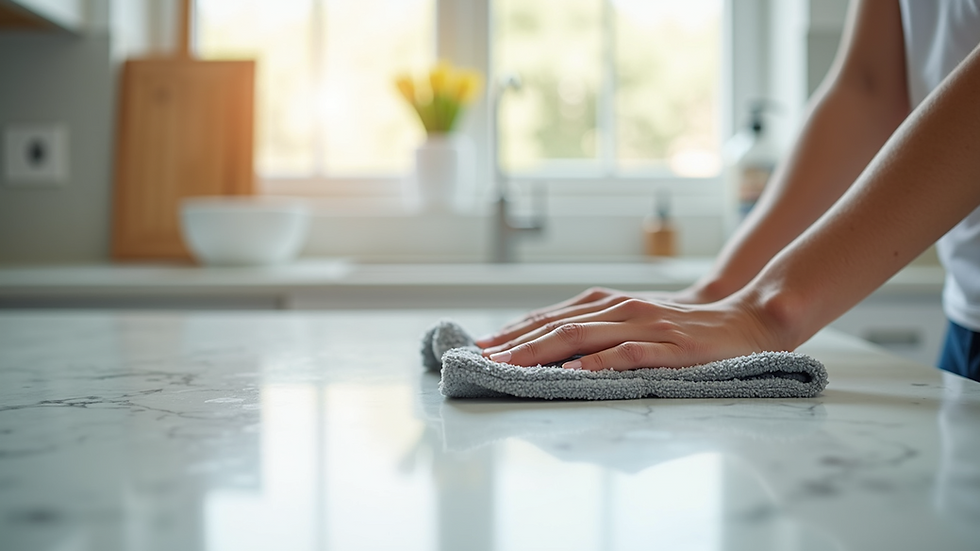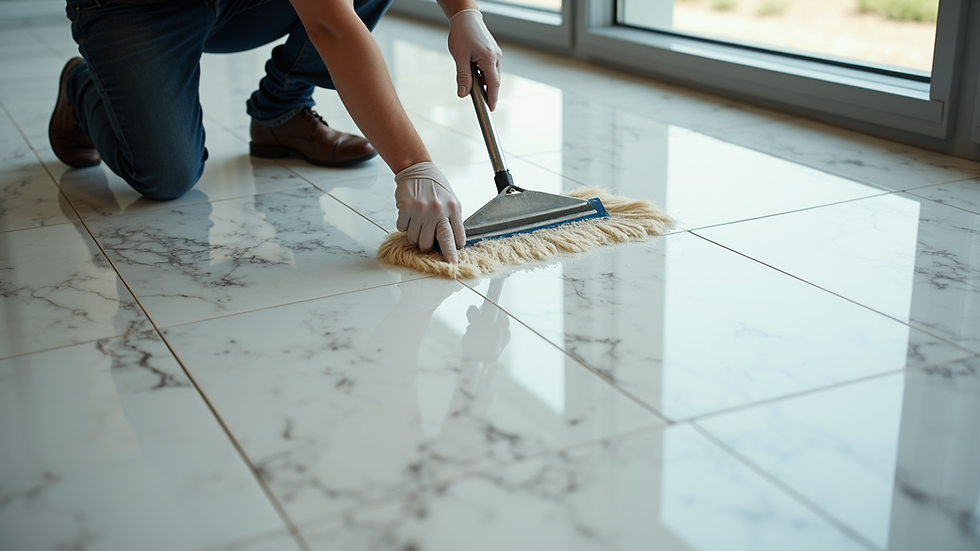Master the Secrets of Effective Marble Maintenance
- TERSO MR

- Sep 17
- 4 min read
Marble is like the elegant grandparent of your home’s surfaces - timeless, graceful, and a little bit delicate. It adds a touch of luxury and warmth that few materials can match. But, just like that grandparent, marble needs a little extra care and attention to keep it looking its best. If you’ve ever wondered how to keep your marble surfaces gleaming without worrying about stains or scratches, you’re in the right place. Let’s dive into the art and science of maintaining marble surfaces with a warm, friendly approach that makes the process feel less like a chore and more like a rewarding ritual.
Understanding Your Marble: The First Step in Maintaining Marble Surfaces
Before we roll up our sleeves, it’s important to understand what makes marble special. Marble is a natural stone composed mainly of calcite, which is sensitive to acids and abrasives. This means that common household items like lemon juice, vinegar, or even some cleaners can etch or dull the surface if you’re not careful.
Think of marble as a delicate flower in your garden. It needs the right environment and gentle care to thrive. Knowing this helps you avoid common pitfalls and choose the right products and methods for cleaning and protection.
Key Characteristics of Marble:
Porous nature: Marble can absorb liquids, leading to stains.
Softness: Compared to granite or quartz, marble is softer and more prone to scratches.
Sensitivity to acids: Acidic substances can cause etching, which looks like dull spots.
Understanding these traits is the foundation of effective marble care. It’s like knowing your car’s engine before you start tinkering under the hood.

Practical Tips for Maintaining Marble Surfaces Every Day
Now that we know what we’re dealing with, let’s talk about daily habits that keep your marble looking fresh and fabulous. The good news? You don’t need fancy tools or expensive products to maintain marble surfaces. A little mindfulness and the right routine go a long way.
Daily Care Routine:
Wipe spills immediately - Marble loves to soak up liquids, especially wine, coffee, and oils. Grab a soft cloth and blot spills right away.
Use a soft cloth or sponge - Avoid abrasive scrubbers that can scratch the surface.
Clean with pH-neutral cleaners - Avoid acidic or alkaline cleaners. A mild dish soap diluted in warm water works wonders.
Dry the surface - After cleaning, dry the marble with a microfiber cloth to prevent water spots.
Avoid These Common Mistakes:
Using vinegar or lemon juice to clean marble.
Placing hot pots or pans directly on marble surfaces.
Using rough scrubbers or steel wool.
By incorporating these simple steps into your daily routine, you’re giving your marble the gentle care it deserves. Think of it as a daily stretch for your body - small but impactful.

The Role of Sealing in Marble Care
Sealing is like putting on a raincoat before stepping out on a drizzly day. It doesn’t make marble waterproof, but it does create a protective barrier that helps repel stains and makes cleaning easier.
Why Seal Your Marble?
Prevents stains: Sealing reduces the stone’s porosity.
Enhances durability: It helps protect against minor scratches and etching.
Maintains shine: A good sealant can keep your marble looking polished longer.
How Often Should You Seal?
Typically, sealing should be done every 6 to 12 months, depending on the marble’s use and exposure. High-traffic areas might need more frequent attention.
Sealing is a bit like giving your marble a spa day - a little pampering that pays off in longevity and beauty.

Tackling Stains and Scratches: Gentle Fixes That Work
Even with the best care, accidents happen. Stains and scratches can feel like a heartbreak, but don’t worry - there are gentle ways to restore your marble’s charm.
Removing Stains:
Oil-based stains (grease, cooking oil): Use a poultice made from baking soda and water. Apply it to the stain, cover with plastic wrap, and let it sit for 24 hours before wiping away.
Organic stains (coffee, tea, wine): A poultice with hydrogen peroxide and a few drops of ammonia can help lift these stains.
Rust stains: These are tricky and often require professional treatment.
Fixing Light Scratches:
Use a marble polishing powder with a soft cloth.
Buff gently in circular motions.
For deeper scratches, professional refinishing might be necessary.
Remember, patience is key here. Marble is resilient but delicate, so gentle care wins the day.
When to Call in the Experts for Marble Maintenance
Sometimes, despite your best efforts, marble needs a little extra help. Professional care can restore its original beauty and protect your investment.
If you notice:
Deep scratches or chips
Persistent stains that won’t budge
Dullness that home polishing can’t fix
It’s time to consider expert help. Professionals have specialized tools and knowledge to handle these issues safely.
For those who want to dive deeper into expert advice and services, I recommend checking out marble maintenance resources. They offer tailored consulting that can guide you through the best practices and solutions for your marble surfaces.
Embracing the Journey of Marble Care
Maintaining marble surfaces is more than just cleaning - it’s about nurturing a beautiful part of your home. With a little knowledge, some gentle care, and a sprinkle of patience, your marble can stay stunning for years to come.
Think of it as a relationship - the more attention and respect you give, the more it rewards you with timeless beauty. So, grab your soft cloth, your spray bottle with your mix hydrogen peroxide (3% solution) with distilled water and Green Palmolive® brand dish soap. and start treating your marble like the treasure it is. You’ve got this!
If you want to explore more tips or need personalized advice, don’t hesitate to reach out to professionals who specialize in marble care. Your marble deserves the best, and so do you.




Comments